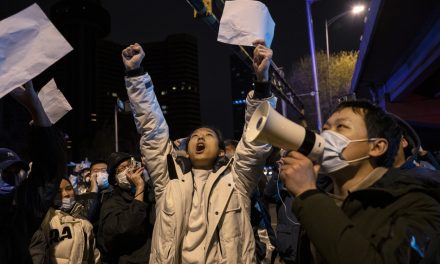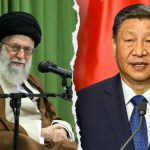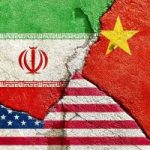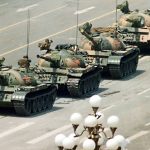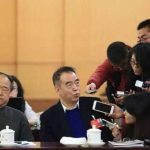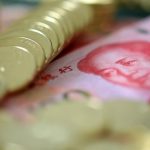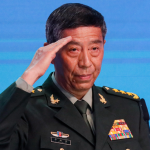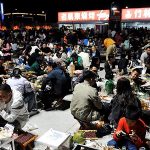By JIANLI YANG
After being postponed for a month, the results of China’s seventh census were finally announced last week. Although no specific reason for the delay was given, it is believed to be related to the Chinese government’s concern about the negative political impact of the census’s results. Many observers have speculated that the data were manipulated prior to publication.
Even if the Chinese government did alter the results, it was unable to fully cover up China’s alarming demographic situation. According to the census results, the country’s total population in 2020 was 1.41 billion—a 5.4 percent increase over 2010, with an average annual increase of 0.53 percent, 0.04 percentage points lower than the average of the previous decade. According to the 2020 National Name Report released by the Ministry of Public Security, there were 10.035 million registered births in China last year. By contrast, China’s National Bureau of Statistics recorded 17.86 million births in 2016. It is readily apparent from these data that China’s birthrate has fallen sharply in recent years.
Although there is no established standard for how large a population any given country needs, having more young people than elderly people is beneficial to a country’s long-term development. As China follows in the footsteps of developed countries, its birthrate is now insufficient to make up for the aging population. China has already entered a stage of “moderate aging.” The problem is that this aging population has yet to acquire adequate wealth. China’s GDP per capita has just reached $10,000. Not only does this place China far behind developed countries, but it also means that China lags behind some countries with younger populations. Consequently, in recent years, more and more people in the country have called for the government to fully lift birth restrictions.
The Chinese government did not fully allow citizens to have a second child until 2016. Before 2016, a strict one-child policy had been implemented for nearly 40 years. While it is unclear whether the one-child policy advanced the CCP’s goals for China’s economic and social development, there is no doubt that its strict implementation resulted in innumerable human rights violations and humanitarian tragedies.
When China implemented its one-child policy in 1978, the CCP Central Committee stated in an open letter, “In 30 years, when the current extremely-intense population growth situation is alleviated, a different population policy can be adopted.”
Why didn’t the Chinese government fulfill its promise and lift the one-child restriction after 30 years in 2008? Policy inertia may have played a role, but more important were two political considerations. One was the CCP’s goal of alleviating poverty through population control, and the other was the CCP’s concern about the rapid growth of China’s minority populations, especially the Uighur population.
The Chinese government needed to use “poverty alleviation” as an excuse to legitimize the continuation of its draconian one-child policy. This belief was not held solely by Xi Jinping. From Deng Xiaoping to Jiang Zemin and Hu Jintao, every Chinese leader had the same conviction, and believed the driving force of China’s reforms was poverty alleviation. The only difference was that Xi developed a clear timetable for alleviating poverty on the basis of his predecessors’ work.

Xi Jinping was obviously worried that the full relaxation of the family planning policy would affect China’s ability to meet its goal of alleviating poverty by 2021 and would even result in people falling back into poverty. Moreover, comprehensive poverty alleviation could greatly affect Xi’s ability to consolidate his rule and authority.
The Chinese government is also concerned that the full elimination of birth restrictions would cause the population of ethnic minorities to surge, thereby altering the country’s existing ethnic composition and “threatening” the stability and security of Chinese society—potentially leading to fissures in the country.
Ethnic minorities in China are growing faster than the majority Han population. According to the 2020 census, Han Chinese account for 91.11 percent of the population, while ethnic minorities account for 8.89 percent, with the proportion of ethnic minorities growing by 0.4 percentage points. Compared to 2010, the population of Han Chinese increased 4.93 percent, whereas the ethnic minority population grew by 10.26 percent.
China’s one-child policy mainly targeted the majority ethnic group: the Han people. Ethnic minorities were allowed to have a second child, and groups with very small populations were allowed to have even more children. The phenomenon of having multiple children was very common among some ethnic minorities. As a result, many grew faster than did the Han people, as reflected by the census data.
For many Chinese people, as childrearing costs skyrocket, their willingness to have multiple children is low—even without birth restrictions. Not many Han Chinese are willing to have a third or even a second child. However, ethnic groups with different religious views and childbearing practices, such as Uighurs, may be willing to have more children. Therefore, even if no limits are placed on the number of children a family can have, it is unlikely that the Han population would be willing to significantly increase its reproduction rate (they would still have a relatively low fertility rate), whereas ethnic minorities would maintain a high fertility rate.
From the CCP’s vantage point, this constitutes a threat to China’s national unity. In response, the CCP adopted two measures. First, it did not fully lift childbirth restrictions, so as not to allow members of “separatist” ethnic groups to have an unlimited number of children. Second, the CCP adopted the brutal tactic of suppressing births in Xinjiang, specifically targeting Muslim women. By doing so, the CCP is attempting to orchestrate a demographic shift that will impact the population for generations. Birthrates in Xinjiang (located in the northwest of China) have already plummeted in recent years, as the mandatory use of invasive birth control procedures has risen.
According to a recent New York Times article, when the CCP ordered women in Xinjiang to be fitted with contraceptive devices, Qelbinur Sedik, then in her late 40s, pleaded for an exemption. She told officials that she had obeyed the government’s birth limits and had only one child. Nevertheless, the authorities threatened to arrest her if she continued resisting. With no other choice, she “went to a government clinic where a doctor, using metal forceps, inserted an intrauterine device to prevent pregnancy.” Sedik cried through the procedure. She has since fled China and now lives in the Netherlands.
These malicious policies and practices are part of the Chinese government’s ruthless attempt to gradually eliminate the country’s Uighur—and, more generally, Muslim—population. This grotesque reality, reflected in China’s 2020 census results, deserves far more attention from the United States government, the international community, the mainstream media and, indeed, anyone who cares about human rights.
Jianli Yang is founder and president of Citizen Power Initiatives for China.
The views expressed in this article are the writer’s own.
This article first appeared in Newsweek on 5/17/21




